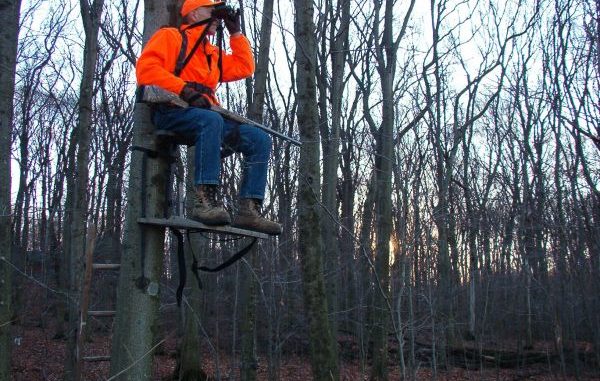
While Savant sees early morning and afternoon as prime deer times, if hunting public land has taught him anything it’s that other hunters think the same way.
So once mid-morning hits, there’s a mass exodus in the woods by hunters — and the deer know that.
“Those deer know when hunters are coming back in the woods,” Savant said. “Mid-morning the deer get up and move around (and do the) same thing in the afternoons.”
Sitting in the stand all day is Savant’s solution to the sporadic deer movement on public land.
Once he’s in an area conducive to deer movement, he searches for the best wind scenario before using his climber to position himself well up a tree.
Savant carries doe estrous and a doe bleat can call if he’s after a buck. He’s seen bucks react well to a bleat, and he’s harvested a few shortly after using it during hunts.
If Savant has faith in an area with ample deer sign, sitting all day is a no brainer. Though he isn’t too quick to call an area home for too long.
Low deer sightings send him packing and looking for greener pastures.
Having a climber handy makes picking a tree and setting up in accordance to wind a quick and easy chore, he added.
Womack, on the other hand, opts for the lightest lock-on stand he can find. He usually hunts all day, though it’s not uncommon for him to hunt out of five different trees.
He will often hunt for a few hours at first light before moving anywhere from 100 yards to a half mile to where he thinks deer might be moving.
“It’s strategic moves,” Womack said. “Depending on where I’m hunting and what the potential is and what’s available.”


